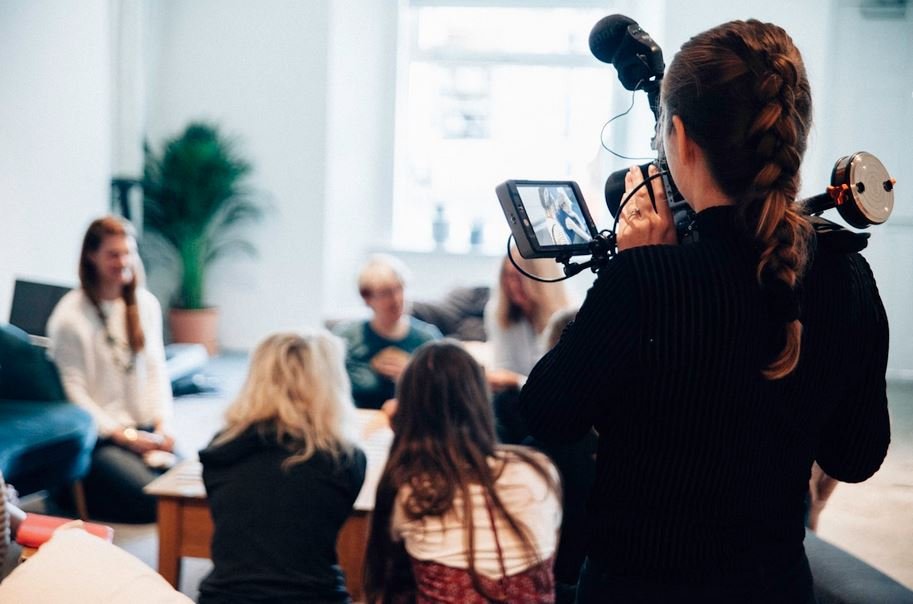
When you attend an interview, the hiring manager and HR manager hope to hire you. The easiest thing for them to do is move beyond the hiring process and get back to work. Hiring is costly and tiresome for a company, which is a consensus among many of the hiring managers and HR managers with whom we’ve worked.
Suggested Read: Top Reasons You Want To Research The Company Before Applying Job
Hiring managers are hoping to see a candidate take the position, to rise up and show them he or she wants it and is the right fit. Their work is most difficult when there is no clear choice of a candidate and they have to work through all the candidates.
You need to make their work easier. You need to prep enough for the interview, to document in writing the things you see that you can affect. You need to give them no alternative but to hire you.
5 Easy Steps of an interview are:
- Preparation
- Arrival
- Introduction
- Rapport building
- Closing
1. Preparation
- Have a day planner or electronic organizer; it shows that you are organized.
- Prepare a manila folder to bring to the meeting. Include in the folder:
- Company information (annual reports, sales material, Internet research, etc.).
- Ten to fifteen well-thought-out questions for the interviewer.
- A blank legal pad, a pen, and anything else you consider helpful.
- Get up two to three hours earlier than usual if you have a morning interview.
- Eat a good meal a few hours before the meeting to avoid a growling stomach.
- Call the day before and confirm the appointment. That will set you apart.
- Be absolutely certain that you have proper directions and the name of the person you should ask for when you arrive.
- Stake out the company before the meeting. Observe employees going to work. Do they have smiles on their faces? What is their attire? You can tell a lot about an organization by studying employees on their way to work.
- Do the same thing in the evening. Are there still smiles on the faces of the employees? Do they leave work at 5:01 p.m., 5:20 p.m., or 7:30 p.m.?
- Practice interview techniques by using video technology. A minimum of 5 hours of video practice, preferably 10, guarantees a stellar performance.
Relax during the drive to the interview. Listen to music that pumps you up. If music does not get you into a power state of mind, think about something that will. Psych yourself up for the meeting. Football players smack heads, crack shoulder pads, and pump themselves up before a game. It enhances their energy level and adds enthusiasm for the event. We’re not advocating for smacking someone’s head to prepare for the meeting, but you get the idea.
2. Arrival
- Arrive at the receptionist’s desk 10 to 12 minutes before the scheduled meeting.
- From the moment you step out of the car in the parking lot, consider that you are making an impression on a prospective employer. Show confidence and smile. Use your innate charm and speak clearly and distinctly. Make a strong initial impact.
- Before meeting the receptionist, visit the restroom to view your appearance. Check your hair, clothing, and general image. Test your smile.
- As you sit in the waiting room, envision a great interview. Visualize being offered the job. Picture yourself as a contributing member of the company’s team. Achieving success is easier once you have it firmly implanted in your mind.
- Stand while you wait or be prepared to get up quickly to meet the hiring manager when he or she comes out to greet you. You do not want the interviewer looking down at you when you meet. You are an equal participant in this process and want to convey this by standing toe-to-toe with the interviewer. Being looked down on does not accomplish this.
- Be aware of your body language. When standing and walking, move with poise and power. Offer your hand to receptionist and secretary alike and make sure you have a sturdy handshake. Do not make it bone-crushing, but make sure it is not limp. If seated, sit erect and display confidence.
- Keep cool under pressure. If you are kept waiting or encounter stress before the meeting, maintain your composure and self-control.
3. Introduction
- Use a firm handshake, made with a wide-open hand, fingers stretched apart. Grasp the manager’s hand and let the manager withdraw his or her hand first. Women should feel comfortable offering a hand, avoiding a limp handshake. A power handshake and a great smile contribute to a great start.
- Speak in a rich, self-confident manner. Change the tone of your voice as you converse. Speak with energy and conviction. Show emotion.
- Make direct eye contact. This demonstrates confidence, trust, and power. People are wary about the honesty of someone who cannot make direct eye contact.
- Determine the interviewer’s communication style and adapt to it. Notice how the person walks, uses his or her eyes and body, and dresses. Observe that person’s overall mannerisms and behavior. Listen intently to his or her words. Is the interviewer a visual, auditory, or kinesthetic communicator? You need to know this. If he or she breaks into a smile frequently, you should smile often. If he or she does not, avoid grinning.
4. Rapport Building
- Look for objects that offer insight into the personality and culture of the company and the interviewer as you enter the office. Simple things can be used as an icebreaker.
- Do not sit until the interviewer is seated.
- Do not place any items on the interviewer’s desk. However, it’s okay to do that on a conference room table.
- Lean forward, with your energy focused toward the interviewer during the meeting. Show enthusiasm and sincere interest.
- Take notes. You may want to refer to something later in the meeting or when preparing your follow-up letter. If you are uncomfortable with this, ask permission.
- Use commonalties between you and the interviewer to establish a comfort zone. Light humor and flattery are effective icebreakers.
- Make good use of openings. For example, if the interviewer begins by saying, Tell me about yourself, you are in control of an early part of the meeting. Deliver a 30-second personal overview of your background, maybe beginning with education, followed by a 60- to 90-second overview of your career in years (x number of years doing this and that, working for them and them). This should accent the presidential and vice presidential messages (what you can do for the company).
- There are three advantages to this approach:
- You are able to demonstrate strong communication skills under stressful conditions.
- You are allowed to give a broad sketch of your background and share information to help connect you with the hiring manager, possibly identifying common interests.
- You have the opportunity to summarize your skills and show how they relate to the needs of the company.
- Prepare for all questions whether you are comfortable answering them or not.The following are a few questions many candidates find troublesome. Rehearse an appropriate answer for each one before the meeting.
- Why are you interested in working here?
- What are your weaknesses? What are your strengths?
- Why should I hire you?
- Don’t you think you’re too old for this job?
- What qualifies you for this position?
- What was the biggest mistake you ever made, and how did you overcome or deal with it?
- Where do you see yourself in three years? Five years? Ten years?
- Do you think you are overqualified for this position?
- Why did you leave your former employer?
- Communicate your skills, qualifications, and credentials to the hiring manager when the opportunity arises. Describe your market value and skills, mention how you will benefit the organization, and demonstrate how you will contribute to the bottom line. Communicate to the hiring authority that you can contribute in a meaningful way:
- Save time.
- Improve sales and/or revenues.
- Reduce costs and expenses.
- Improve communications or information flow.
- Solve or take preemptive action to solve organizational problems.
- Look for hidden meanings in questions. For instance, if you are asked, Don’t you think you might be a bit overqualified for this position? the question really is, Will you cost me too much money?
- Don’t you think you might be bored with this job? or How soon before you leave for a better-paying job? Every question has an obvious and hidden meaning. Think fast!
- Make a good appearance and demonstrate adaptive skills that show that you have the ability to perform when you do that, you’ve positioned yourself for hiring.
- Use concrete examples to illustrate specific accomplishments. Accomplishments determine hirability.
- Call the interviewer by name throughout the meeting. We all like the sound of our names. This works to your advantage as long as you don’t overuse the technique. Unless you have been instructed otherwise, use the person’s title and last name, Mr. Smith or Mrs. Jones, rather than Bob or Judy. However, in most cases people will want to be addressed by first name. If they do not, that might raise a flag.
- Combine good listening skills with hearing skills. Some people listen but do not hear what is being said. Job offers are made to those who listen well and answer questions powerfully and succinctly.
- Avoid flinching during the meeting. Flinching is an impulse in which the body makes a motion in response to an emotion. People often flinch when asked a question that makes them uncomfortable. As a result, you squirm in your chair, touch your face, breathe heavily, blink, or make movements that demonstrate discomfort. During your practice with video equipment, you should have identified and corrected your flinching habit.
- Study the hiring manager’s movements, and you will be able to determine what is a natural movement and when he or she is uncomfortable with the conversation or the answers you are giving. Hiring managers flinch too! React immediately, adjust your presentation style, and rephrase or qualify your comments. Be sure to react in a smooth and tactful manner.
- Use silence to your advantage. A few seconds of silence can be effective. Silence gives you the opportunity to deliberate over your answer or qualify a comment. Silence is a highly effective communication technique. H. Anthony Medley, the author of Sweaty Palms, says there are two ways to respond when faced with silence. First, you can wait calmly, remaining focused; the silence may be on purpose so that the interviewer can observe your reaction. The second way is a bit more risky. You can break the silence by asking a question or making a comment. The key is to react naturally, maintaining your composure. Be careful not to talk just to talk; you do not want to offer up empty words to fill the break.
- Plan, prepare, practice, and rehearse. There is no substitute for preparation.
5. Closing
As the meeting draws to a close, there are usually two issues remaining:
- Salary and compensation package.
- Additional questions.








